Lathyrus odoratus
Annual climber grown for its fabulous scent and pretty colours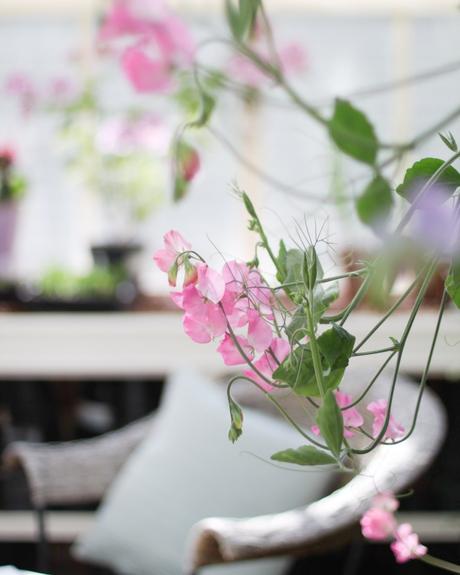
Once again I find myself savouring the long slow days of winter. As I write today the snow is falling gently outside and my garden is buried under a blanket of snow. On days like these I like to use the time to make plans for the gardening season to come - March is the beginning of the sowing season and I have a box full of seeds to attend too. Sweet peas are a garden essential and the first seeds I like to sow every year.
The first sweet peas are believed to have been found growing wild in Sicily in 1695 by the Sicilian monk Father Francis Cupani. Cupani sweet peas are still available to grow today and I always like to have a few in the garden. The flowers are small, with only 2 flowers per stem and the stems short, but the scent is intoxicating! In 1870 Henry Eckford developed the first hybrid sweet peas which he called grandifloras - he eventually developed 115 grandiflora varieties. A chance cross pollination of these grandiflora varieties was found growing at the Earl of Spencer's Althorp Park Estate by his head gardener Silas Cole. This was the first Spencer sweet pea which are typically very large, frilly and scented varieties with long stems that make them ideal as cut flowers. There are many varieties of Spencer sweet peas available now and these are my favourite varieties to grow as they combine long stem length with beautiful colour and oodles of sweet pea scent.
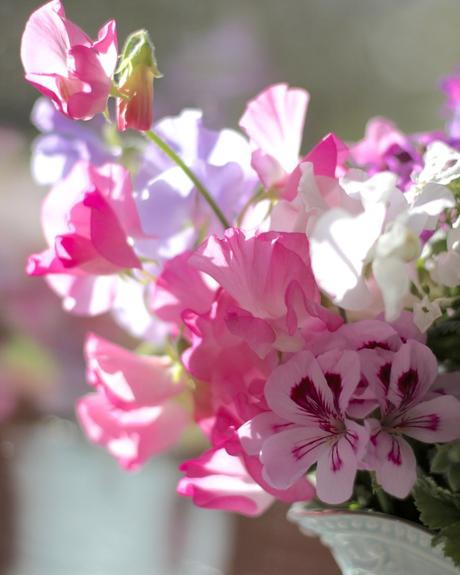
Delicate fragrant sweet peas evoke the nostalgia of old fashioned cottage gardens. They transport us back to country childhoods and kitchens where a jar full of sweet peas was a simple adornment on the kitchen table. I cannot imagine my garden without sweet peas and always grow far too many because I find it so hard to limit my choice of seed or discard any surplus to requirements seedlings. So great is my love of sweet peas that I try to have them in flower from the April until September and I never bore of picking them.
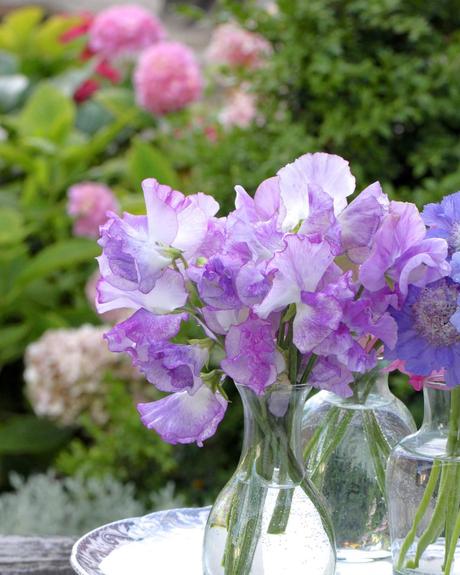
My earliest sweet peas will flower inside my greenhouse in April and were sown back in October. They are now quite large seedlings that I have planted at the base of a frame in my greenhouse bed. Any that I cannot fit in the greenhouse will be hardened off in the cold frames and planted outside in March (once these freezing conditions have left us) to hopefully produce an early outside crop. These sweet peas are a special variety called Winter Sunshine and Spring Sunshine and are bred to flower in low light conditions so are ideal to grow in the winter months. I buy these seeds from Owl's Acre Sweet Peas.
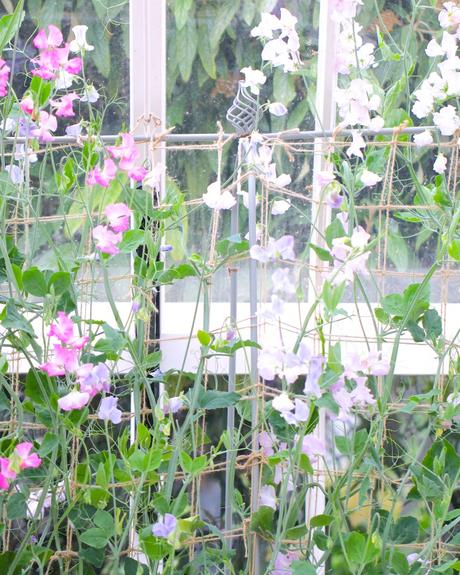
The seeds that I am about to sow this month are mainly Spencer varieties that I have been growing for years and that should start flowering in July as my greenhouse sweet peas go over. I find I have less problems with pollen beetles on sweet peas that flower in mid to late summer and so now delay my sowing of these Spencer varieties until March. I am lucky to be growing in the UK as sweet peas are happiest in a cool, mild climate. Trying to grow them anywhere hot and humid is bound to lead to disappointment. In previous years I have soaked the seeds before sowing but I have read that this is not necessary so I am going to save time this year and sow the seed without any soaking or chitting.
After sowing the seeds into deep root trainers they are well watered and then placed in my heated propagator to germinate. They would germinate just as well without heat, but the propagator speeds things up. I have never covered them to exclude light whilst they germinate, although many guides do recommend to do this. Within 4-5 days the seedlings will be showing and I will move them onto the greenhouse staging for a couple of weeks to develop. I usually cover them with a clear plastic seed tray cover at this stage for extra protection against mice. After that it is into the cold frames to carry on growing and hardening off before planting out in mid April or later if the conditions are very cold. Although sweet pea plants are very hardy they tend to sulk and stop growing if transplanted into cold ground, so it is better to wait until they will be happy to grow away quickly.
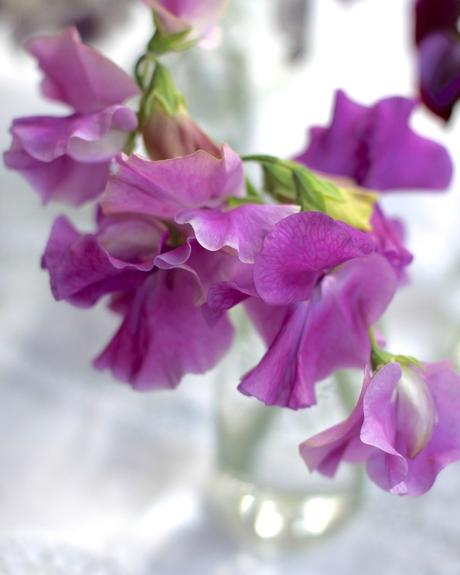
Sweet peas love a rich moist soil in a bright sunny position and they are very hungry plants. We cannot expect huge growth and mountains of flowers without generous feeding. Whilst they are in their root trainers the compost will feed them for the first 6 weeks or so of growth. After that I will start to add liquid seaweed to the watering can once a week. I am also trialing a specialist sweet pea food this year - I will let you know if I think it makes any difference. Sweet peas like to have their heads in the sun and their roots in a deep moisture rich soil so I dig plenty of garden compost into the ground before transplanting and add a sprinkling of fish, blood & bone to the planting hole. I will then feed them regularly with a seaweed feed throughout their growing season. Most of my sweet peas are grown on an Agriframes frame covered with jute netting, but I also grow them up arches, in amongst my runner beans and this year I am going to try letting my spare plants scramble through climbing roses and into shrubs.
Once your sweet peas are flowering it is vital to dead head them regularly otherwise they will run to seed and stop producing new blooms in no time. I try to cut all the flowers off my plants, both in the greenhouse and outside, every week - it is one of my favourite tasks on a warm summer evening. Regular dead heading, plenty of water at the roots and a weekly feed will keep your sweet peas blooming for the longest possible time.

You can buy a good variety of sweet pea seeds in garden centres now, or you can order online from Sarah Raven, Owl's Acre Sweet Peas, Chiltern Seeds and all the main seed suppliers. There is still time to order and sow your seeds, so if sweet peas are on your list this year do make sure you get on with growing them now.
Do you love to grow sweet peas? If you have any advice on varieties you like to grow or tips on getting the best from your sweet pea plants, please do share it with us in the Comments below.

